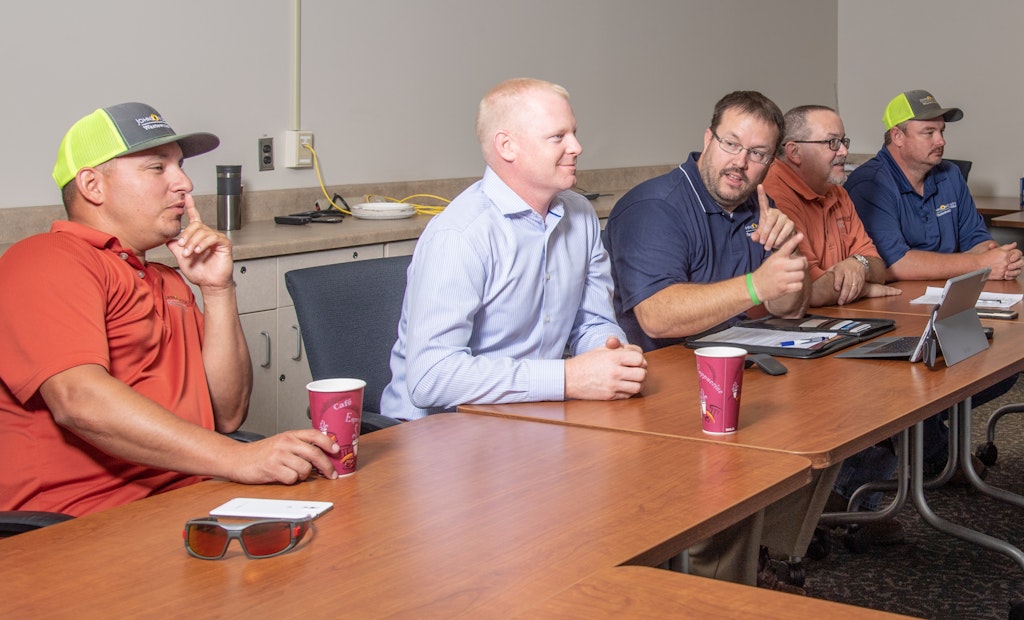
Johnson County Wastewater team members view diagrams of the collection system asset management program (CSAMP) in the facility's conference room. (Photo By Denny Medley)
Interested in Inspection?
Get Inspection articles, news and videos right in your inbox! Sign up now.
Inspection + Get AlertsAt Johnson County (Kansas) Wastewater, they don’t have to guess about the condition of their sewer system.
The staff is using a unique data-based tool called the Collection System Asset Management Plan (CSAMP) to take in data from the division’s CCTV units and assess sewer conditions, ID critical needs, and recommend the most effective solutions.
Developed with the help of engineering firm HDR, the program has saved Johnson County significant money. Asset manager Patrick Beane estimates the program has saved the county $1 million in contracted cleaning and CCTV costs while spreading capital costs across the most critical projects.
“When we started, we had a worst-case budgetary backlog of some $400 million,” he says. “But we’ve actually been spending between $5 and $7 million a year by not doing work except when it is needed. Eventually we’ll have to renew or replace all our pipes, but not all at once.
“By having data to understand our conditions and the rate they are deteriorating, we have a high level of confidence in what we need to be spending.”
Weekly analysis
The CSAMP recommends repairs or replacements where needed, as well as the criticality of the project by analyzing thousands of CCTV observations on a weekly basis.
“Based on the defect and the seriousness of it, we can determine what type of repair a pipe needs — a pipe patch short liner, a full CIPP liner or open cut excavation,” says project manager Joe Barnes. “Is it a small hole, or a crack, or a defect that could lead to total collapse?”
He says patches are applied by JCW staff to 5-foot sections having just one defect, using trailer-mounted Trelleborg liner systems. CIPP is also the primary repair option for longer sections of pipe. SAK Construction is the current contractor.
When a pipe wall is deformed or missing and the pipe is losing capacity, the opencut method may be called for.
Much of the repair work is done in house, but outside firms are used when the work is too deep for JCW equipment, or access to the damaged section is difficult.
The data collected through the line-cleaning efforts are equally vital. “We are able to generate consistent findings on sludge, roots, what kind of material we are dealing with, and if we are on the right cleaning schedule,” says Barnes. “We don’t want to waste resources and possibly degrade the pipe by cleaning it unnecessarily.”
Serving 400,000 people
The Johnson County Wastewater collections and treatment system serves more than 400,000 residents who live in 16 bedroom communities southwest of Kansas City. The system includes seven treatment plants, which together process about 50 mgd, and over 2,250 miles of gravity sewer lines, including 42 miles of force main and 32 pumping stations. There are no combined sewers.
The sewer lines primarily consist of smaller 8-, 10-, and 12-inch pipes which include clay, PVC and ductile iron pipe. The larger diameter interceptors are a mix of reinforced concrete, iron and fiberglass pipes. The system has 55,000 manholes — approximately half of which are older brick construction.





